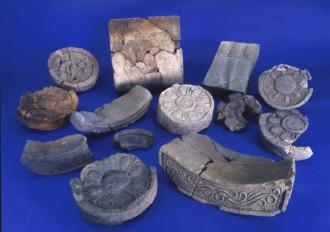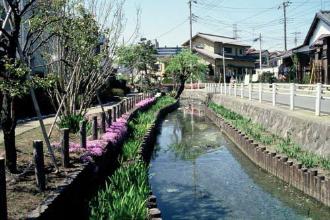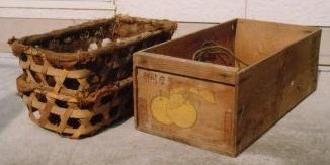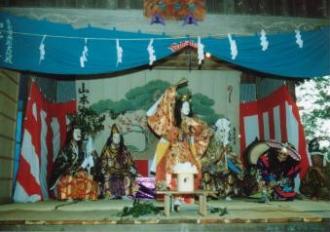Last updated: August 30, 2013
More than 160 primitive and ancient ruins have been discovered in Inagi City. It began with the Paleolithic period about 20,000 years ago, and continued with the Jomon period, Yayoi period, Kofun period, and Nara period. )to come. These ruins include earthenware and stone tools used by the people of the time, as well as the remains of pit dwellings. was discovered and tells the story of how people lived in ancient times. Primitive ancient ruins are often discovered in areas within the Tama Hills, and in the area of Inagi City at that time. It is thought that Inagishiki was a very comfortable place to live.
Pottery and stone tools discovered from ruins in the city can be seen at the Inagishi Local Materials Room. I can.
Local Materials Room
In order to find out the detailed content, the following books will be helpful.

Discovered roof tiles from the Nara period
In the Edo period, people lived in villages. At that time, the Inagi City area included Yanokuchi Village, Naganuma Village, Daimaru Village, Momura Village, and Sakahama Village. There were six villages: Ma) Village and Hirao Village. These villages (muramura) are mainly rice-growing villages, and the village head (nanushi) is responsible for village politics as the representative of the farmers (noumin). Seiji).
Daimaru Yosui was built during the Edo period. Agricultural water created by drawing water from the Tamagawa River in Daimaru will be used to help farmers in Daimaru Village, Naganuma Village, The water was used in rice fields in Yanokuchi Village and downstream villages (Muramura). Water from Daimaru Yosui was extremely important for rice cultivation.
Materials from the Edo period and information about the Daimaru canal can be viewed at the Inagi City Local Materials Room.
The following books can be used as a reference when looking up detailed information.

Daimaru water canal built in the Edo period
The period from the Meiji period to the end of the war in August 1945 (when the war ended) is considered as modern times. Says. In April 1896, six villages merged and Inagi Village was born. In Meiji 26, the village of Inagi, Minamitama District in Kanagawa Prefecture was expanded to Inagi Village, Minamitama District in Tokyo Prefecture. Inagimura).
Since the Meiji period, pear production in Inagi has become popular. In the 1900s, pears such as ``Chojuro'' and ``Nijusseiki'' were produced in Inagi, and even more pears were produced in Inagi. (none) production has become popular. (The beginning of Inagi's pear production dates back to the Edo period.)
In 1928, the Nanbu Railway (currently the Nanbu Line) opened to Daimaru. Also, in 1933, Tamagawarabashi Bridge was opened, and life gradually became more convenient.
The following books can be used as a reference when looking up detailed information.

Pear shipping box and pear basket
The war ended in August 1945. The period after that is called the present day. The production volume of agriculture in Inagi decreased due to the war, but it gradually recovered. In 1948, an agricultural cooperative was created, and rice and pear cultivation gradually became more prosperous. The population of the village, which had temporarily decreased due to the war, gradually increased.
In September 1949, the Oshitate area was incorporated from Tamamura (now Fuchu City) into Inagimura. In April 1957, the population increased and the area became Inagimachi. The population at this time was 10,145. In November 1971, the population increased further and Inagimachi became Inagi City. The population at this time was 36,800.
To find out more about the content, the following book will be a good reference.

Edo no Sato Kagura passed down to the present day (nationally designated cultural property)